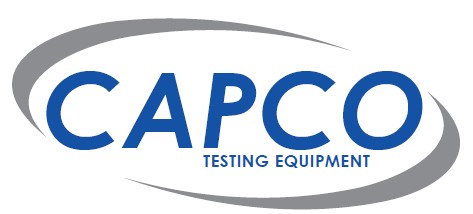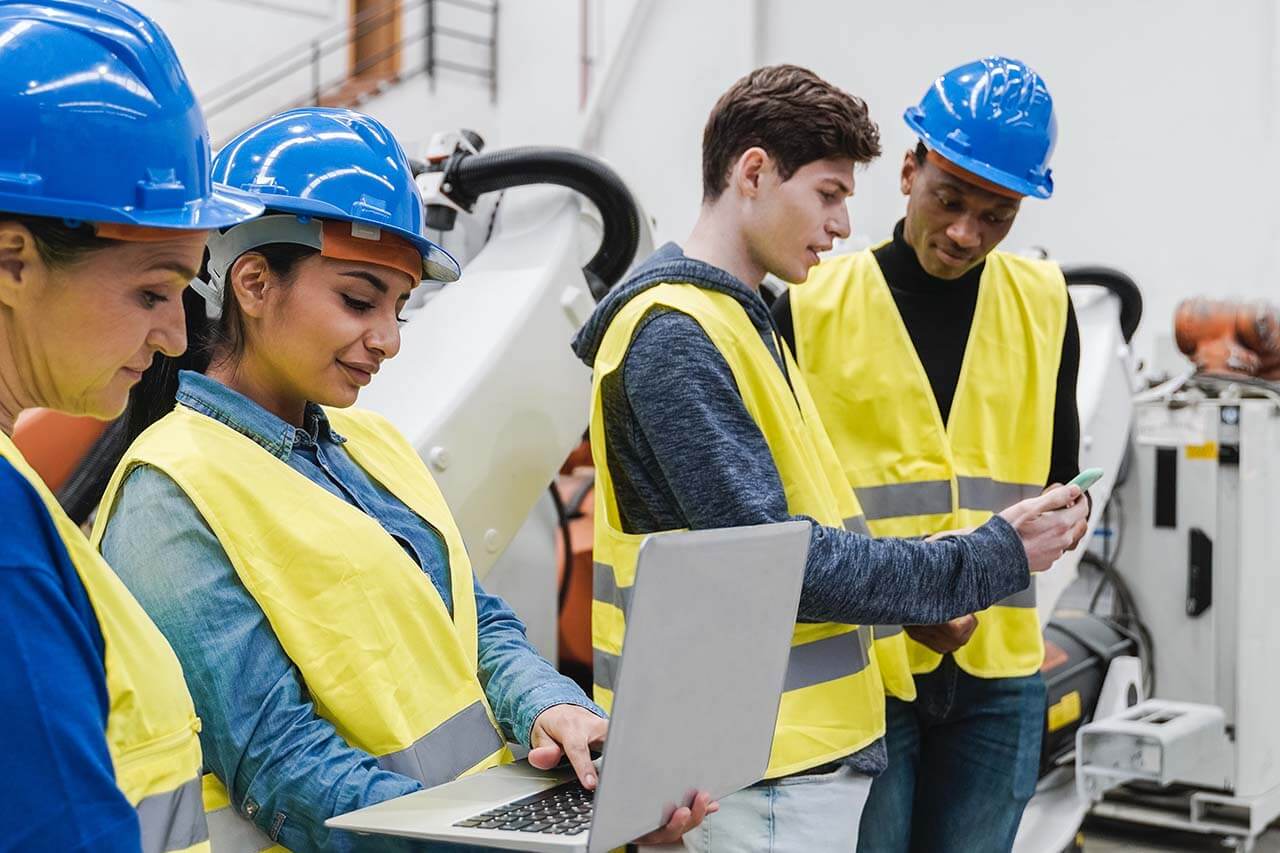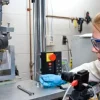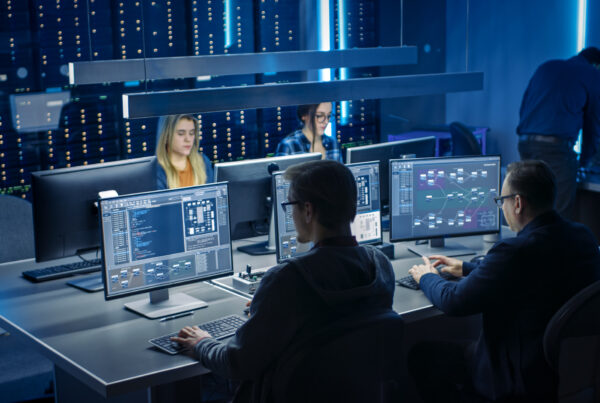When precision measurement becomes essential in challenging industrial contexts, maintaining equipment calibration and operational accuracy presents unique difficulties that standard laboratory approaches cannot address. Environmental extremes whether intense vibration, corrosive atmospheres, temperature fluctuations, or airborne particulates compromise the performance of sensitive analytical instruments. Equipment like the sieve shaker exemplifies this challenge, as particle size analysis equipment must deliver consistent results despite being routinely exposed to dust, vibration, and mechanical stress that would render more delicate instruments quickly inoperable.
Environmental Interference Patterns and Defensive Protocols
Harsh industrial environments generate multiple interference patterns that collectively erode measurement accuracy through both immediate disruption and gradual calibration drift. These interference vectors rarely operate in isolation; instead, they create compound challenges that standard calibration protocols fail to address. Vibration disturbances from heavy equipment transfer through structural connections, introducing subtle measurement errors that accumulate over time. Thermal gradients across equipment surfaces create internal stresses that distort precision components beyond their calibrated specifications. Airborne contaminants infiltrate instrument housings, creating friction points and sensor obstructions that progressively degrade performance.
Effective defense against these interference patterns requires layered protective approaches rather than singular solutions. Vibration isolation systems implementing both passive and active dampening technologies create measurement zones protected from structural transfers. Thermal regulation systems maintaining consistent operating temperatures prevent gradient-induced distortion that standard calibration cannot address. Positive pressure housings generating filtered airflow outward from sensitive components prevent contaminant infiltration more effectively than simple barrier approaches. These defensive systems require integration within comprehensive environmental management protocols rather than implementation as isolated interventions.
The effectiveness of these protective measures depends significantly on their adaptation to specific operational contexts. Generic approaches provide minimal protection compared to systems designed around facility-specific interference patterns. Environmental mapping—systematically documenting vibration sources, thermal gradients, and contamination vectors throughout operational spaces—enables targeted protective measures that address actual conditions rather than theoretical challenges. This mapping process often reveals unexpected interference sources overlooked in standard facility designs.
Calibration Frequency Recalibration
Standard calibration intervals established for controlled environments prove consistently inadequate when equipment operates under harsh conditions. The accelerated drift patterns typical in challenging environments require fundamental reconsideration of calibration timing rather than simple interval shortening. Traditional time-based approaches scheduling calibration at fixed intervals regardless of operational intensity fail to address the non-linear degradation patterns common in harsh environments.
Adaptive calibration scheduling based on operational intensity and environmental exposure provides significantly more reliable measurement stability than fixed intervals. Instruments experiencing heavy utilization in challenging conditions require verification checks at exponentially shorter intervals than identical equipment operating intermittently under controlled conditions. Implementing performance-based triggers automated verification testing when environmental parameters exceed established thresholds creates responsive calibration systems that maintain accuracy despite environmental fluctuations.
The verification-calibration distinction becomes particularly important in harsh environments. Full calibration procedures require significant downtime and often specialized personnel, making frequent implementation impractical in production contexts. Brief verification checks confirming performance within acceptable tolerance bands enable rapid assessment without operational disruption. When verification indicates potential drift, targeted calibration addressing specific parameters replaces comprehensive procedures, minimizing production impact while maintaining measurement integrity.
Redundant Measurement Architectures
Single-point measurement systems create inherent vulnerability in harsh environments regardless of individual instrument quality or protection measures. When critical process decisions depend on measurement accuracy, redundant sensing architectures provide reliability levels unachievable through individual instrument improvements. These redundant systems implement multiple measurement technologies operating on different physical principles, ensuring that environmental factors affecting one approach leave alternatives uncompromised.
Primary-reference system architectures exemplify this approach, pairing continuous inline measurement devices with periodic verification using fundamentally different technologies. While inline systems provide operational continuity, scheduled verification using alternative methods detects subtle drift patterns before they affect process outcomes. The resulting measurement confidence enables process optimization impossible with questionable data quality, creating operational efficiencies that rapidly offset the additional equipment investment.
Redundancy extends beyond duplicate sensors to encompass divergent measurement approaches. Particles size distribution, for instance, can be assessed through mechanical sieving, laser diffraction, sedimentation analysis, or microscopic imaging. Each technology responds differently to environmental challenges vibration affects mechanical systems, dust interferes with optical approaches, while temperature fluctuations impact fluid-based methods. Implementing complementary technologies enables cross-verification that identifies developing accuracy issues before they compromise product quality.
Measurement Triage Systems
When multiple analytical systems operate simultaneously in challenging environments, establishing measurement priority hierarchies enables appropriate resource allocation for maintaining critical accuracy while accepting wider tolerance bands for less crucial parameters. This measurement triage approach acknowledges the practical impossibility of maintaining laboratory-grade accuracy for all parameters in harsh operational settings. Instead, it focuses protective measures and verification frequency on parameters directly impacting product quality or safety while implementing less stringent protocols for informational measurements.

Effective triage systems begin with comprehensive measurement mapping—documenting every analytical system within operational environments and classifying each according to its quality impact. This classification establishes appropriate tolerance bands and verification frequencies based on actual quality sensitivity rather than treating all measurements equally. Parameters directly influencing regulatory compliance or critical quality attributes receive the most stringent accuracy requirements, while process information parameters operate with wider acceptable ranges.
This prioritization naturally extends into maintenance resource allocation, with critical measurement systems receiving preventative interventions while less crucial equipment operates on condition-based schedules. The resulting maintenance efficiency ensures that limited technical resources focus on genuinely important accuracy requirements rather than distributing effort equally across all systems regardless of their quality impact.
Environmental Adaptation Versus Environmental Control
Traditional approaches to protecting sensitive equipment emphasize environmental control—creating artificial laboratory conditions within industrial settings through elaborate enclosures and HVAC systems. While effective when properly implemented, these control approaches require substantial infrastructure investment and create operational barriers that complicate maintenance access and workflow integration. Environmental adaptation strategies offer compelling alternatives by enhancing equipment resilience rather than attempting to neutralize surrounding conditions.
Adaptation approaches focus on modifying standard equipment to withstand specific environmental challenges without requiring comprehensive environmental control. Conformal coatings protect electronic components from corrosive atmospheres more cost-effectively than complete isolation. Enhanced filtration systems prevent particulate interference without requiring full enclosure. Thermal compensation algorithms adjust readings based on ambient conditions rather than requiring precise temperature regulation. These targeted modifications enable accurate operation within harsh conditions rather than attempting to eliminate those conditions entirely.
The adaptation approach particularly suits operations requiring frequent interaction between measurement systems and process streams. Traditional isolation methods create procedural bottlenecks when samples must transition between harsh process environments and controlled analytical conditions. Adapted systems eliminate these transitions by bringing measurement capabilities directly into process environments, enabling real-time analysis impossible with isolated equipment.
Maintenance Protocol Transformation
Standard maintenance approaches developed for controlled environments prove consistently inadequate when equipment operates in harsh conditions. The accelerated wear patterns and unique failure modes encountered in challenging environments require fundamental maintenance philosophy revisions rather than simply increased frequency. Preventative schedules designed for normal conditions fail to address the non-linear degradation common when multiple stress factors combine in industrial settings.
Predictive maintenance leveraging performance pattern analysis provides significantly more effective protection than calendar-based approaches. Monitoring subtle changes in equipment behavior—power consumption variations, processing time fluctuations, or calibration drift patterns—enables intervention before accuracy degradation affects product quality. These predictive approaches shift maintenance timing from arbitrary schedules to data-driven interventions precisely when needed, simultaneously reducing unnecessary maintenance and preventing unexpected failures.
Maintenance scope similarly requires revision for harsh environment applications. Standard procedures typically emphasize mechanical components while giving limited attention to environmental protection systems. In challenging conditions, these protective elements—seals, filters, isolation systems—often determine measurement accuracy more directly than the analytical components themselves. Comprehensive maintenance protocols addressing protection systems with the same rigor as measurement components ensure sustained accuracy despite environmental challenges.
Human Factors in Hostile Conditions
According to the U.S. National Institute for Occupational Safety and Health, human performance degrades predictably under environmental stress, directly impacting measurement accuracy in manually operated systems. Excessive noise, temperature extremes, or poor air quality impair cognitive function and fine motor control, introducing operator-dependent variability that undermines measurement precision regardless of equipment quality. These human factors often contribute more significantly to measurement error than equipment limitations, particularly for procedures requiring judgment or manual manipulation.
Procedure design for harsh environments must acknowledge these human performance limitations rather than assuming ideal operator function regardless of conditions. Automated sequences replacing manual adjustments eliminate variability when environmental factors might impair fine motor control. Visual verification steps utilizing high-contrast indicators accommodate reduced visual acuity under poor lighting conditions. Simplified decision trees replace complex judgments when noise or other stressors might impair cognitive processing. These human-centered design adaptations maintain procedural integrity despite challenging conditions.
Training approaches similarly require adaptation for harsh environment operations. Standard instruction typically emphasizes ideal procedures without addressing modification strategies for challenging conditions. Effective training for harsh environments includes specific adaptation protocols teaching operators when and how to modify standard procedures when environmental factors would otherwise compromise results. This adaptive competence enables measurement integrity across varying conditions rather than only under ideal circumstances.
Wrapping Up
Maintaining measurement accuracy in harsh environments represents a multidimensional challenge requiring integrated approaches rather than isolated interventions. Equipment protection provides the foundation for sustained performance, but equally important are appropriate calibration strategies, redundant verification methods, and human-centered procedural designs. When properly integrated, these elements create measurement systems capable of delivering reliable data despite environmental challenges that would render standard approaches quickly ineffective.
The investment required for creating these robust measurement capabilities typically returns substantial value through improved process control, reduced material waste, and enhanced product consistency. Organizations that master accuracy maintenance under challenging conditions gain significant competitive advantages through higher quality outcomes and more efficient operations than competitors struggling with unreliable measurements. This performance differential often differentiates market leaders from followers, particularly in industries where precise control of material properties directly influences product performance.
As industrial processes grow increasingly sophisticated, the value of accurate measurement under all operational conditions continues to expand. Organizations pursuing operational excellence increasingly recognize that measurement integrity provides the foundation for all quality improvement initiatives. Without reliable data, process optimization becomes impossible, statistical control remains elusive, and quality improvements happen by chance rather than design. Investing in measurement systems capable of maintaining accuracy despite environmental challenges thus represents not merely a technical necessity but a strategic imperative for organizations committed to sustained excellence in challenging operational contexts.







